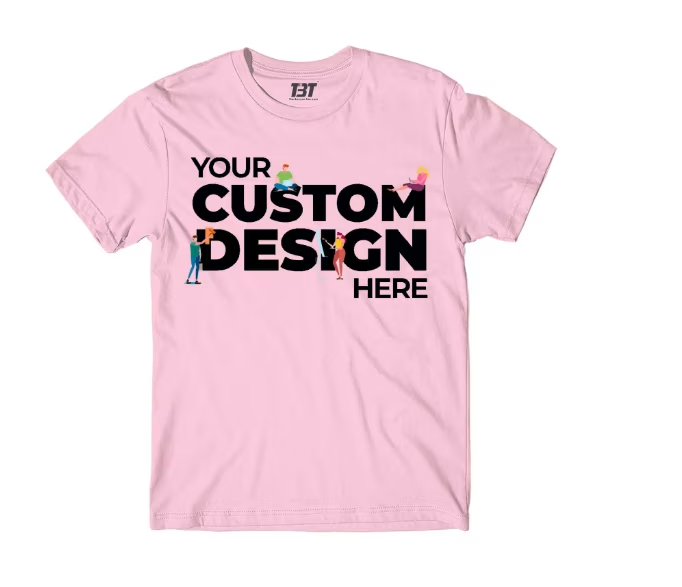Shirt printing is more than just a way to display logos or slogans—it’s an art form that brings ideas, creativity, and personality to life on fabric. Whether you’re designing shirts for a business, event, or personal use, understanding the different types of shirt printing methods available is crucial for making the best choice for your design needs. In this detailed guide, we’ll explore the various printing techniques, their benefits, drawbacks, and examples, to help you select the perfect method for your custom apparel.
With the growing demand for personalized clothing, understanding these methods not only helps ensure the best quality prints but also gives you an edge in this competitive market. Let’s dive into the world of shirt printing and explore which method suits your creative needs.

What is Shirt Printing?
Shirt printing is the process of applying designs, logos, or images onto a shirt or other garment to personalize or customize it. This technique is used for a variety of purposes, from creating promotional merchandise, custom team uniforms, fashion items, to personal gifts. The method used for shirt printing depends on the design complexity, the type of fabric, and the intended use of the shirt.
There are different techniques for shirt printing, each offering unique benefits and being suitable for different types of designs and fabric. Shirt printing can be used to create anything from simple, bold text or logos to intricate, full-color artwork. Whether you're running a small business or looking to create custom apparel for a one-time event, the printing method you choose can significantly impact the final outcome of the garment.
7 Types of Shirt Printing
Shirt printing is a fantastic way to add personality and creativity to garments, whether for personal use, business promotion, or special events. There are various techniques, each with its own unique benefits, best-use scenarios, and results. Below, we'll break down the top types of shirt printing methods and how each one works, so you can make an informed choice for your custom apparel needs.
1. Screen Printing: The Classic Favorite
Screen printing, also known as silk screen printing, is one of the oldest and most widely used techniques in the garment printing industry. This method uses a stencil or mesh screen to apply layers of ink onto the fabric. Screen printing is particularly popular for its durability and vibrant results.
How It Works
Screen printing involves creating a separate screen for each color in your design. The ink is pushed through the screen mesh onto the fabric using a squeegee. Each color requires a different screen, and the process is repeated for every additional color. This makes it highly effective for simple designs with few colors but can get costly when dealing with intricate or multi-colored prints.
Benefits of Screen Printing
- Cost-Effective for Bulk Orders: The initial setup for screen printing is labor-intensive, but the per-unit cost decreases significantly with larger quantities, making it ideal for bulk printing.
- Durable & Long-Lasting: The ink used in screen printing is thick and adheres well to the fabric, making it resistant to fading and wear over time.
- High-Quality, Vibrant Prints: It allows for vivid colors and crisp lines, making your designs stand out.
- Works Best for Simple Designs: Ideal for logos, text, and designs with limited colors.
Best For
- Bulk Orders: Large production runs are the best fit for screen printing, with costs reducing as the order volume increases.
- T-shirts with Bold Designs: If your design is simple with few colors, screen printing is the go-to option.
Example
Companies like Custom Ink use screen printing for many of their bulk custom t-shirts, especially for event promotions or corporate giveaways.
2. Direct-to-Garment (DTG) Printing: The Digital Revolution
Direct-to-garment (DTG) printing has taken over the world of custom t-shirt printing in recent years due to its flexibility and ability to print full-color designs with stunning detail. This method uses specialized inkjet technology to print directly onto the fabric, much like how a regular inkjet printer works with paper.
How It Works
DTG printing involves loading the shirt into a printer, where the design is printed directly onto the fabric using water-based inks. The printer can handle complex designs with high detail and gradient colors. Unlike screen printing, DTG doesn’t require stencils or screens, making it an ideal choice for intricate and multi-colored designs.
Benefits of DTG Printing
- Full-Color Capability: DTG can print designs in full color, including intricate details and gradients, which makes it a top choice for complex artworks.
- No Setup Costs: Unlike screen printing, there’s no need for screens, stencils, or separate color plates, reducing setup time and costs.
- Quick Turnaround Time: Since there’s no need for multiple screens or inks, DTG prints can be made quickly, making it a good option for smaller batches.
- No Minimum Order: Whether you’re printing one shirt or hundreds, DTG printing can be done with the same ease, making it ideal for on-demand printing.
Best For
- Custom Orders: If you’re printing a single or small batch of custom designs, DTG is ideal for printing one-off items.
- Detailed, Color-Rich Designs: Perfect for designs that include detailed images or complex color patterns.
Example
Spocket, one of the largest print-on-demand services, uses DTG printing for their custom apparel, allowing for high-quality, full-color prints on various garments.
3. Heat Transfer Printing: Versatile and Quick
Heat transfer printing is a popular method, especially for small businesses and individuals looking to produce custom shirts with minimal investment. It involves transferring a design onto fabric using heat and pressure.
How It Works
Heat transfer printing uses heat and pressure to transfer ink from a carrier paper (or vinyl) to the fabric. There are two common types: vinyl transfer and sublimation transfer. For vinyl, the design is cut out from a vinyl sheet and then pressed onto the fabric, while paper transfer involves printing the design on a special paper and then transferring it using a heat press.
Benefits of Heat Transfer Printing
- Quick & Easy Setup: Heat transfer printing doesn’t require complicated setups, making it ideal for smaller orders or on-demand printing.
- Variety of Materials: This method works on a variety of materials, including cotton, polyester, and blends.
- Cost-Effective for Small Runs: Great for creating a few shirts with custom designs without the large upfront costs.
- Multiple Color Options: Unlike screen printing, it allows printing of multi-colored designs with ease.
Best For
- Small Orders: If you’re making a few shirts, heat transfer printing is a fast and inexpensive choice.
- Personalized Apparel: Ideal for creating custom one-off shirts with names, logos, and slogans.
Example
Many Etsy shops use heat transfer printing for their custom apparel, offering personalized shirts with names and quotes.
4. Vinyl Cutting: The Precision Choice
Vinyl cutting uses a computer-controlled machine to cut out designs from colored vinyl sheets, which are then transferred to the fabric using heat. This method is excellent for creating bold, simple designs like logos and text.
How It Works
In vinyl cutting, a design is created on a computer and then sent to a vinyl cutter, which cuts the design from a vinyl sheet. The excess vinyl is then peeled off, and the remaining design is applied to the fabric with a heat press.
Benefits of Vinyl Cutting
- Long-Lasting: Vinyl designs tend to be durable, especially when applied to high-quality fabrics.
- Great for Small Quantities: This method is cost-effective for small runs and custom orders.
- High Precision: Ideal for designs with sharp, clean lines like logos, text, and simple illustrations.
Best For
- Simple, Bold Designs: Works best for shirts with text or simple shapes, like logos or numbers.
- Sports and Event Shirts: Often used for customizing jerseys and event apparel.
Example
Many sports teams use vinyl cutting for their custom jerseys, especially for adding player names and numbers.
5. Sublimation Printing: The Vibrant Solution
Sublimation printing is a high-tech process that turns dye into gas, which is then absorbed by polyester fabric. This method offers vibrant, long-lasting prints that become part of the fabric itself.
How It Works
Sublimation printing uses heat to convert solid dye into gas, which then bonds with the fibers of the fabric. This method works only on polyester or polyester-coated items and produces prints that are vibrant, full of detail, and can cover the entire garment.
Benefits of Sublimation Printing
- Bright, Full-Color Prints: Sublimation produces high-quality, bright, and durable designs.
- No Feel to the Design: The dye becomes part of the fabric, so there’s no texture or feel from the print.
- Great for All-Over Prints: Perfect for printing designs that cover the whole shirt, from collar to sleeve.
- Durability: The prints are long-lasting and won’t fade or peel off over time.
Best For
- Sportswear & Activewear: Ideal for performance apparel like jerseys and activewear.
- All-Over Prints: Perfect for creating designs that span the entire shirt, including sleeves and collar.
Example
Companies like TeeSpring use sublimation printing for their custom sports apparel and all-over print shirts, offering a durable and vibrant solution for athletes and teams.
6. Embroidery: Adding a Touch of Class
Embroidery is a popular alternative to printing for businesses that want to offer high-end, premium apparel. This method involves stitching the design directly onto the fabric, giving a textured, professional finish.
How It Works
Embroidery uses specialized machines to stitch a design into the fabric using colored threads. This process results in a clean, high-quality finish that can be done with precision.
Benefits of Embroidery
- Professional Look: Embroidered designs look more sophisticated and are often used for corporate or promotional apparel.
- Highly Durable: The thread used in embroidery won’t fade or crack over time.
- Adds Texture: The raised stitches create a three-dimensional effect that adds texture to your design.
Best For
- Corporate Apparel: Ideal for creating polos, jackets, or shirts with a professional logo.
- High-End Custom Shirts: Often used for luxury brands or high-quality custom shirts.
Example
Nike uses embroidery to create their premium apparel, including custom team jackets and polos for events.
7. Flock Printing: The Velvety Touch
Flock printing creates a velvety, soft texture on the fabric, making it a popular choice for fashion-forward brands and high-end designs.
How It Works
In flock printing, adhesive is applied to the fabric, and then fine fibers are applied to the sticky surface, creating a velvet-like texture. The design can be intricate and gives an elegant, tactile element to the garment.
Benefits of Flock Printing
- Luxurious Feel: The velvet texture adds a premium touch to custom shirts.
- Durable: The fibers stay intact, ensuring the design is long-lasting.
- Soft, Attractive Appearance: Adds a unique tactile appeal to designs.
Best For
- High-End Fashion: Great for luxury or trendy designs where texture is an important element.
- Unique Designs: Perfect for adding something different to your custom apparel collection.
Example
Fashion brands like Adidas use flock printing for some of their more exclusive, luxury items.
How to Choose the Right Shirt Printing Method
Choosing the right shirt printing method depends on various factors, including the type of design, fabric, order volume, and budget. Each method has its own set of advantages and drawbacks, so understanding your needs will guide you toward the most suitable option. Below are some key points to consider when selecting a printing method for your custom shirts:
1. Design Complexity
If your design includes detailed graphics, gradients, or many colors, you may want to opt for a method like DTG printing, which allows for intricate details and full-color designs. On the other hand, if your design is simple—such as a logo or text—screen printing or vinyl cutting could be the best options.
2. Order Volume
For large orders, screen printing is generally the most cost-effective method as the per-unit cost decreases with higher volume. If you're ordering just a few shirts or looking for on-demand printing, DTG printing or heat transfer printing might be better choices since these methods don't require extensive setup.
3. Fabric Type
The type of fabric you’re printing on can impact the print quality and method. For example:
- Sublimation printing is best suited for polyester fabrics and produces vibrant, durable prints.
- Embroidery works well on heavier fabrics like jackets or polos.
- Heat transfer is versatile and works with a variety of fabrics but is especially effective on cotton blends.
4. Budget
If you're on a tight budget, vinyl cutting and heat transfer printing tend to have lower initial costs and are good for smaller runs. For larger orders, screen printing might be more economical in the long run. DTG printing generally has higher upfront costs but can be cost-effective for short runs of intricate designs.
5. Durability
Consider how long you want the print to last. If you need a design that will stand up to wear and tear, screen printing and embroidery offer the best durability. Sublimation also provides long-lasting results, especially for performance wear, but it's limited to polyester fabrics.
Conclusion
Choosing the right shirt printing method is key to ensuring your designs look professional and last a long time. Whether you’re printing a few shirts or thousands, understanding the pros and cons of each method will help you select the best option for your business or personal needs. Each method has its own set of benefits, and your choice should depend on the type of design, fabric, quantity, and your budget.
From the classic and cost-effective screen printing to the digital versatility of DTG, each technique offers something unique. Keep in mind your specific needs—whether it’s vibrant, detailed prints, bulk orders, or a premium feel—and choose the printing method that best suits your goals.






































